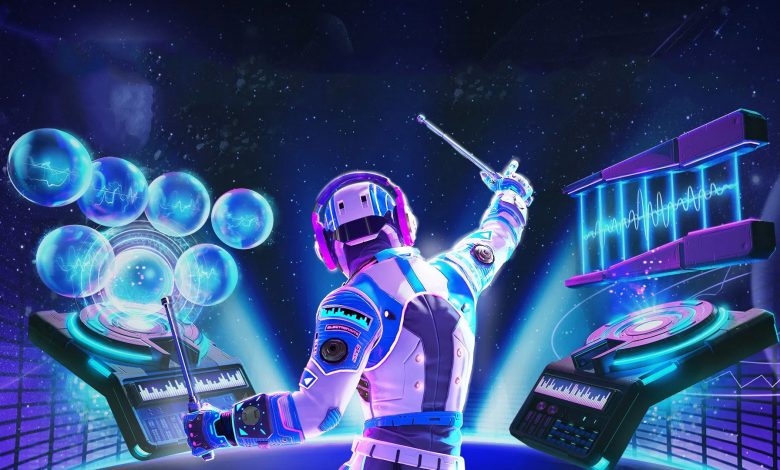The Art of Game Sound Design and Music: Crafting Immersive Experiences

In the world of video games, sound design and music play a pivotal role in creating immersive and engaging experiences for players. From the subtle ambiance of a haunted mansion to the adrenaline-pumping score of a high-octane race, game audio has the power to evoke emotions, enhance gameplay, and bring virtual worlds to life. This article explores the intricate world of game sound design and music, highlighting their importance and impact on the gaming industry.
Sound Design: Building Realistic Environments
- Sound designers meticulously craft the audio backdrop of a game, capturing every detail from footsteps and environmental sounds to explosions and weather effects.
2. Creating Atmosphere: Setting the Mood
- Soundscapes and ambient audio transport players to different worlds, creating a sense of place and enhancing the game’s narrative.
3. Interactive Audio: Dynamic Experiences
- Interactive audio adapts to player actions, immersing them further in the game world. For instance, sound changes as players move through different environments or encounter enemies.
4. Foley Artistry: Realism in Virtual Worlds
- Foley artists recreate real-world sounds in creative ways, adding authenticity to animations and interactions.
5. Character Sound Design: Giving Life to NPCs
- Every character’s voice, from heroes to villains, contributes to their personality and story, making dialogue and interactions memorable.
6. Musical Composition: Elevating Emotions
- Game music shapes the emotional landscape, heightening tension during intense moments and evoking nostalgia in quieter scenes.
7. Adaptive Music: Evolving with Gameplay
- Adaptive music changes dynamically based on player actions, seamlessly transitioning between exploration, combat, and other scenarios.
8. Leitmotifs: Themes that Define Characters
- Leitmotifs are recurring musical themes associated with characters, creating a powerful connection between players and the virtual personas.
9. Collaboration with Game Designers: Enhancing Gameplay – Sound designers and composers work closely with game designers to synchronize audio cues with gameplay elements, improving player feedback.
10. Sound Effects and Gameplay Feedback: Enhancing Immersion – Audio cues provide essential feedback to players, alerting them to hidden dangers, successful actions, or pending challenges.
11. Emotional Resonance: Storytelling through Music – Music enhances storytelling by conveying emotions, character development, and pivotal plot moments.
12. Cultural Significance: Reflecting Themes – Game music can incorporate cultural elements to reflect the game’s setting, enhancing its authenticity and relatability.
13. Interactive Musicals: Innovative Narratives – Some games explore interactive musical narratives, where players’ actions influence the unfolding story and music.
14. Accessibility: Inclusive Game Design – Game audio design includes features for visually impaired players, such as audio cues and navigation guidance.
15. Career Opportunities: The World of Game Audio – Sound designers, composers, and audio engineers play essential roles in creating captivating gaming experiences, offering diverse career paths.
Game sound design and music are powerful tools that elevate gaming from mere entertainment to an art form. The careful orchestration of audio elements enhances immersion, storytelling, and emotional engagement, providing players with unforgettable experiences. Whether players are embarking on epic quests, solving intricate puzzles, or engaging in thrilling battles, the world of game audio is there to guide their journey and leave a lasting impact. As the gaming industry continues to evolve, the significance of sound design and music remains a fundamental aspect of crafting games that resonate with players around the globe.
Becoming a Game Music Designer: Crafting Sonic Adventures in the Gaming World
Behind every immersive video game experience is a symphony of carefully composed melodies, atmospheric soundscapes, and adrenaline-pumping tracks. Game music designers are the maestros responsible for creating these sonic journeys that enhance gameplay, evoke emotions, and transport players to fantastical worlds. In this article, we will delve into the fascinating role of a game music designer, exploring the skills, challenges, and rewards of this unique career path.
The Art of Fusion: Music and Gaming
- Game music designers are the artists who blend their musical expertise with the interactive nature of gaming, creating a seamless marriage of sound and gameplay.
2. Musical Storytelling: Enhancing Narratives
- Game music adds depth to storytelling by underscoring pivotal moments, character developments, and plot twists.
3. Emotional Resonance: Eliciting Feelings
- Through carefully composed melodies and arrangements, game music designers evoke a range of emotions, from excitement to introspection.
4. Adaptive Composition: Music in Motion
- Creating music that dynamically changes based on player actions adds a layer of interactivity and enhances immersion.
5. Collaboration with Game Developers: Co-Creating Experiences
- Close collaboration with game designers ensures that music seamlessly aligns with gameplay elements, creating a harmonious player experience.
6. Genre Versatility: Tailoring Soundscapes
- Game music designers are versatile, adapting their compositions to various genres, from epic fantasy to sci-fi thrillers.
7. Technical Proficiency: Merging Art and Technology
- Familiarity with software, audio engines, and coding languages is crucial for integrating music into the game’s mechanics.
8. Creating Leitmotifs: Thematic Unity
- Crafting leitmotifs associated with characters or themes reinforces the game’s identity and establishes a powerful emotional connection.
9. Player Engagement: Enhancing Gameplay – Game music designers create audio cues that guide players, provide feedback, and contribute to a seamless and intuitive gaming experience.
10. Cultural Sensitivity: World-Building through Music – Incorporating cultural elements in game music design enhances authenticity and enriches the game’s world.
11. Innovation and Experimentation: Pushing Boundaries – Game music designers have the freedom to experiment with unconventional sounds, instruments, and techniques to create unique sonic landscapes.
12. Sound Design Collaboration: Crafting Atmosphere – Collaborating with sound designers enhances the game’s overall audio experience, combining music with environmental sounds.
13. Player Impact: Crafting Memorable Moments – Iconic game music becomes synonymous with memorable gaming moments, enhancing player nostalgia and connection.
14. Entrepreneurial Opportunities: Self-Publishing and Indie Games – Game music designers can explore opportunities in indie game development, self-publishing music albums, and collaborating with emerging studios.
15. Lifelong Learning: Evolving with the Industry – The gaming industry and technology evolve rapidly, requiring game music designers to stay updated and adapt their skills.
Becoming a game music designer is a journey of artistic expression, technical prowess, and creativity. As you embark on this career path, you’ll play a crucial role in shaping the player experience, transporting gamers to uncharted realms through the power of sound. With a blend of musical talent, technological acumen, and a passion for gaming, you have the potential to create compositions that resonate with players, leaving an indelible mark on the gaming world. So, whether you’re crafting epic orchestral scores or experimenting with electronic soundscapes, your journey as a game music designer promises to be a harmonious symphony of innovation and artistic fulfillment.
















